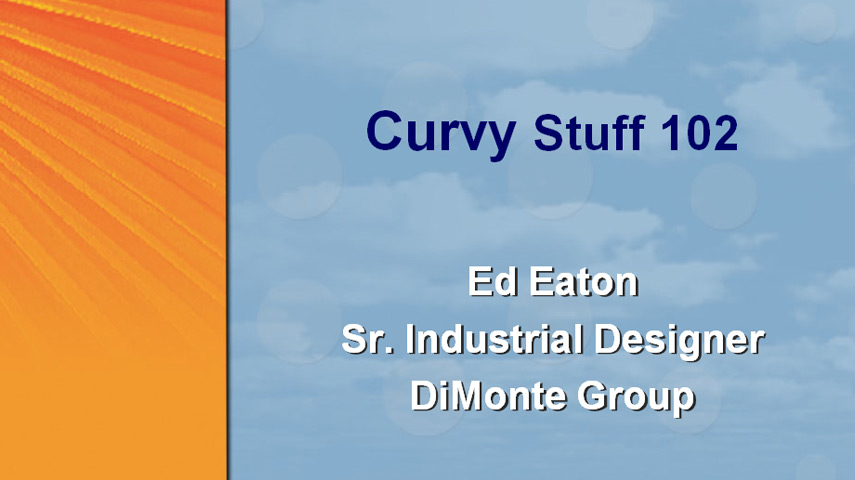
“Out of date” alert: Though I tested everything thoroughly at the time this was authored, please note that many items in this presentation have been made out of date by subsequent improvements in SWx (notably ‘modeling overmolds’, which is a LOT easier after the introduction of multi-bodies in SWx 2003. See: Curvy Stuff V – The Wrath of Scotty, part 2).
As with any presentation you attend or subsequently find online, be it mine, someone else’s, or even God’s, don’t take anything on faith – test everything out for yourself! We all make mistakes or wrong assumptions, and SolidWorks continues to evolve.
Inspiration: Having been to SWx world a couple of times, and for years been an eager consumer of any SWx tips I could get my hands on, I noticed that there was a huge hole in the available worldwide conversation about modeling curvy features in SolidWorks. Sure, individual features have their issues (see Curvy Stuff 101) and there was plenty of traffic on that topic, but the much harder problem in my experience was bringing Curvy Features and other features together into a single model – and on that topic, there wasn’t much info.
So this, my first and probably most important contribution to the conversation about SolidWorks, discusses how SolidWorks works behind the scenes to bring feature together and the ways you can use that knowledge to overcome modeling issues
In those early days I dove in to reverse engineering SolidWorks and test everything that I could in the curvy features so I could somehow model the shapes that I needed for my job. After working a lot of it out, it seemed like a shame that every other user would have to repeat the same laborious testing process, so I took additional time to document and present my findings. Good thing, too – I personally gave this presentation to developers at SolidWorks in Concord and subsequently some of the more painful bits have been dramatically improved or even removed from the software.
Abstract: In this session, attendees gain the confidence to conquer the challenges of bringing complex features together. Topics for discussion include: surfaces versus solids, overcoming awful modeling challenges, filleting problems, and more.
Benefit: Attendees learn how to overcome modeling roadblocks by understanding how SolidWorks works at a root level. The importance of knowing the interchangeability of surfaces and solid features, the critical fact of the BREP behind it all, and that every feature is just a macro for creating faces is critical to anyone who wants to push SolidWorks modeling beyond simple blocky shapes.
SWW2003_CurvyStuff102.zip(42MB)
Contents: Powerpoint presentation and working SolidWorks files
